Right now, over 10% of all the species on Earth are facing potential extinction over the course of the 21st century. It's known as the Holocene Extinction event. One in ten species- that's insane. The current rate of extinctions is over 1000 times background levels. And it's all caused by human activity.
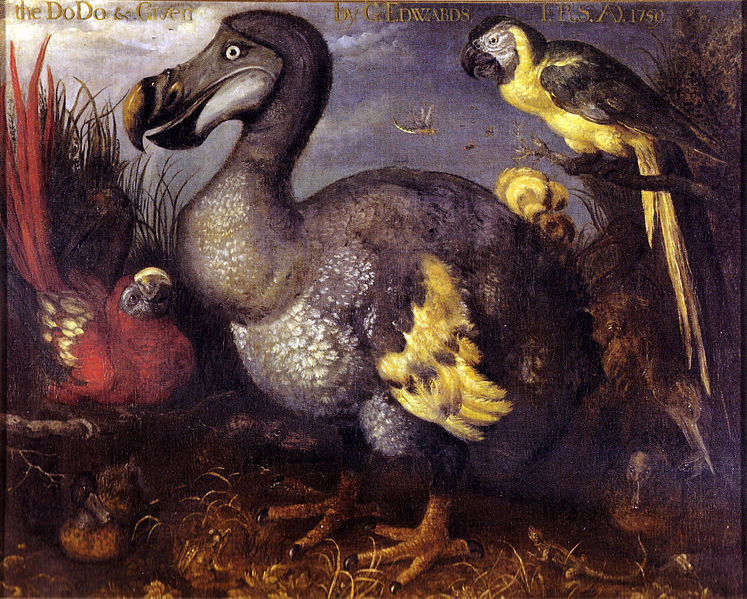
The Dodo, driven extinct by humans by 1662. [Image source]
The numbers go a bit wobbly after the 21st century- as more and more species go extinct, food webs and ecosystems begin to break down. Ecosystems are a classic example of complex systems- the elaborate feedback mechanisms and unpredictable results of force applied to a complex system (in this case extinction)- produce profoundly unpredictable results. We don't know how bad it's going to get- just that it's going to be really, really bad. It's not to the level of the great mass extinctions, thankfully. The worst of those, the Permian extinction, killed well over 90% of all species living on Earth today. Many of the rest killed well over 70% of living species. Still, though- the human mass extinction is huge. It will be taking the #6 spot on the list.
One of the biggest tragedies of this extinction event is watching as a species becomes doomed. Bringing a species to extinction isn't just a matter of killing off the last survivor. Species have a minimum viable population. Drop below that number, your species will be incapable of maintaining sufficient genetic diversity or even replacing dying members of your species. There are plenty species on the planet right now that are essentially extinct yet still walking around.
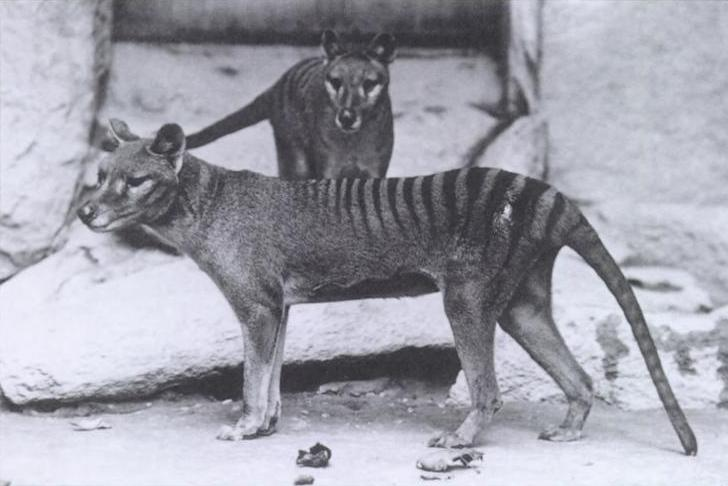
The thylacine, or Tasmanian Tiger. Declared extinct in 1936. [Image source]
How exactly are we doing so much damage? Well, there are, unsurprisingly, quite a few ways. First off is reproductive pressure. There are, when it comes down to it, two major reproductive strategies. First, you can produce massive amounts of offspring, abandon them to their own devices, and wager on enough of them reaching adulthood. Second, you can have a smaller amount of offspring and lavish much more energy on them, vastly increasing the probability of their survival to adulthood. Up until recently, both were highly effective strategies. The latter, slower strategy often tends to produce much larger, deadlier creatures as well, which definitely helps them survive.
Then humans came along. Humans are unique in that they hunt absolutely anything and everything- even massive apex predators. Those adaptations that render them unkillable and unhunted as adults? They don't stop us. Plus, due to the greater calorie counts of larger creatures, we were- and still are- incentivized to go after the largest creatures around for food. We've discovered- through both real world observation and mathematical modeling- that it takes surprisingly little to wipe out a species relying on the latter strategy. When a species only produces one offspring a year, killing off a parent that might not only help that offspring survive but also produce more offspring in the future is a huge, huge deal. A species can be forced beneath its minimum viable population very quickly by what seem like fairly minor levels of killing by humans.
The effects of this can be seen particularly strongly in the oceans- over 90% of all large bony fish have vanished over the last century alone. It takes 18 times as much work to catch a pound of fish today as it did in the 1800s.
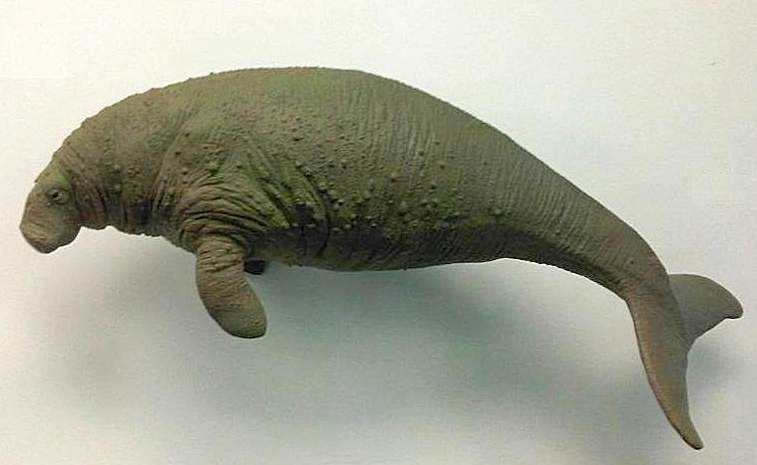
Steller's Sea Cow. Driven extinct by 1768, a mere 27 years after it was first encountered by Europeans. [Image source]
The next major cause of extinction is habitat loss. This one doesn't require too much detailed explanation- humans are really hungry for more room to grow. More room for our farms, more room for our cities, more room for our roads, more room for our golf courses, make room, make room! As we chop down the rainforest and drain the water from rivers, ecosystems get correspondingly smaller.
Those shrinking ecosystems, however, have an effect disproportionate to their loss of territory. I've discussed island biogeography several times before- it's the study of isolated populations and their evolution. One of the key insights of the science is the relationship between space and population stability. Any given territory can only support so much life- a predator that needs 40 square miles to hunt on can't survive on 20. So it seems intuitive that we'd lose some species as territory shrinks- but species loss is considerably higher than those numbers would indicate. What's happening, essentially, is that as the population shrinks with the territory, it becomes less and less resistant to random chance. When you have a huge population, a tsunami wiping out part of it probably won't end your species. When your population is tiny? Bye bye.
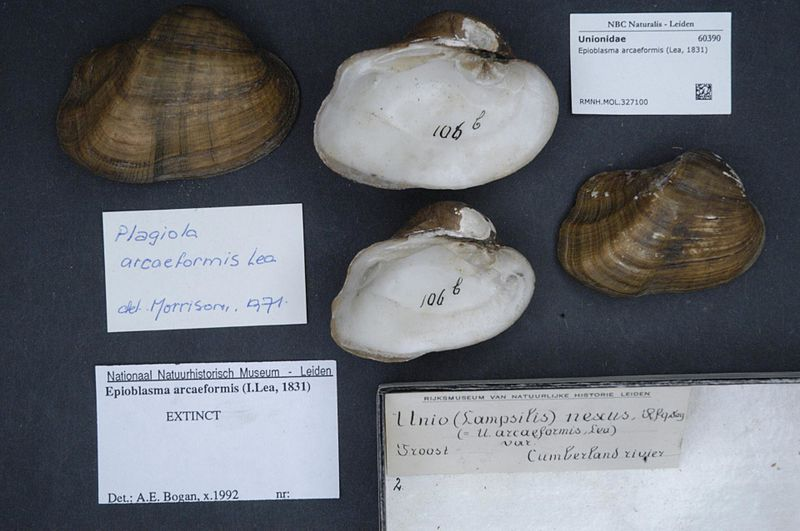
The Arc Formed Pearly Mussel. Already badly threatened, it was driven to final extinction by the construction of the Cherokee Dam in Tennessee in 1941. Most extinct species aren't flashy, interesting, or beautiful. [Image source]
Next is ecosystem decay. Ecosystems are carefully interwoven webs. Food chains, water distribution, symbiotic relationships, etc, etc- any healthy ecosystem could keep a dozen ecologists and numerous other biologists in work for centuries studying its intricacies. When species start to vanish from an ecosystem, though, the damage to the web starts to spread. The whole thing starts to unravel, and eventually the web just snaps apart.
Most of these ecosystem webs have a keystone species- one whose interactions dominate the rest of the ecosystem. Sometimes it's a large herbivore, sometimes an apex predator, sometimes it's a plant. When that species dies off, for whatever reason, the rest begin to crumple around them. Of course, it works the other way, too- kill off enough of the species that supports the keystone species, and it dies off, taking much of the rest of the web with it.
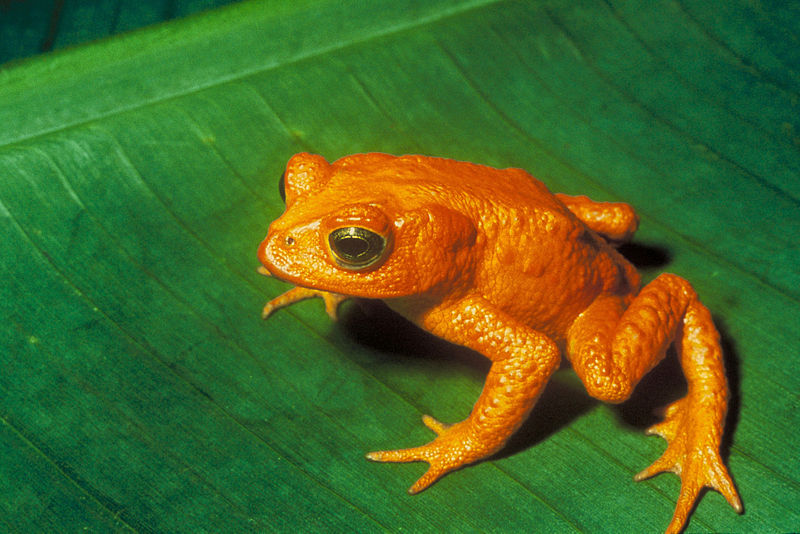
The Golden Toad. Discovered in 1966, declared extinct in 1989. [Image source]
I'd meant to cover all the ways in which we bring extinctions about in a single post before getting to other facets of the Holocene Extinction, but this one's already reached over a thousand words. Next time we'll move on to a few more modern causes of extinction.
Bibliography:
The Sixth Extinction, by Elizabeth Kolbert
The Song of the Dodo, by David Quammen
The Ocean of Life, by Callum Roberts
The Emerald Planet, by David Beerling
Wonderful Life, by Stephen Jay Gould
Full House, by Stephen Jay Gould
Life, by Richard Fortey
https://en.wikipedia.org/wiki/Arc-form_pearly_mussel
https://en.wikipedia.org/wiki/Extinction
https://en.wikipedia.org/wiki/Extinction_event
https://en.wikipedia.org/wiki/Holocene_extinction
https://en.wikipedia.org/wiki/List_of_recently_extinct_reptiles
https://en.wikipedia.org/wiki/Steller%27s_sea_cow
https://en.wikipedia.org/wiki/List_of_recently_extinct_bird_species
https://en.wikipedia.org/wiki/List_of_recently_extinct_plants
https://en.wikipedia.org/wiki/Golden_toad

